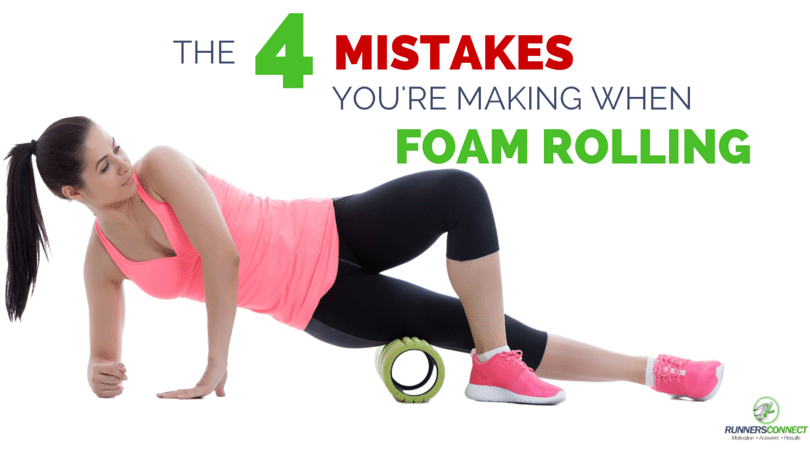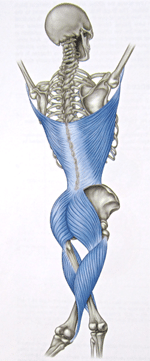Can I Use Foam Roller on My Neck
I can still remember a time when foam rollers were the latest novelty in training rooms across the country. Rolling out in public usually got you quite a few stares and hardly anyone knew what a foam roller was, let alone how to use one correctly.
Nowadays, foam rollers can be found almost everywhere you look – gyms, physical therapy clinics and on the living room floors of most runners I know.
And that's great because, unlike many training fads, foam rollers actually work! The benefits of foam rollers for our sore muscles are almost endless. You can use it on almost every muscle of your body, from your calves, all the way up to your shoulders and neck.
If you have had a long day at work, foam rolling your back just feels so good and gets out a lot of the knots.
Plus, as they become more popular, new runners are introduced to the power of foam rollers every day. Some people even claim that foam rollers help to prevent cellulite. While we cannot prove or disprove that, we may be sharing some research with you on that topic in the future.
However, just like any other effective training or recovery tool, it is possible to use foam rollers in the wrong way.
In this article, we're going to look at exactly how foam rollers work so you can understand what they do and why foam rollers are good for runners. Then I am going to show you four of the most common mistakes runners make when using the foam roller (and how to fix them) so you can use the correct foam rolling technique, and use the best foam rolling exercises to help you stay injury free and relaxed.

How Does Foam Rolling Work?
Let's start with a lesson in fascia.
 Running causes your muscles to go through a constant process of breakdown and repair.
Running causes your muscles to go through a constant process of breakdown and repair.
Over time this causes the muscles to become tight when the fascia, the connective tissue that surrounds the muscles, starts to thicken and shorten to protect the underlying muscle from further damage.
Sometimes the fibers and fascia contract so much they form trigger points, which manifest as sore spots needing to be released.
Fascia also has the ability to contract independently of the muscles it surrounds. It responds to stress without your conscious command.
That is a problem.
Why? Because it means fascia is impacting your movements, for better or worse.
It means that this stuff massage therapists and physical therapists and orthopedists have right at their fingertips is the missing variable, the one they've been looking for.
Here's the deal:
Fascia is made primarily of densely packed collagen fibers that permeate your muscles, bones, nerves, blood vessels and organs.
There isn't a place in your body where fascia doesn't exist.
When fascia becomes restricted, adhesions form causing soreness, restricted movement, gait change and potential injury.
For example, tight fascia around your IT band can cause your IT Band Syndrome, meaning your knee cap will track incorrectly.
If you loosen the muscles around your it band, your knee cap begins tracking correctly and your knee stops hurting.
How does foam rolling help my fascia?
Foam rolling, also known as myofascial release, is the application of pressure to eliminate scar-tissue and soft-tissue adhesion by freeing up your fascia.
The good news is fascia and trigger points can be released.
Even better, once released, every one of the problems tight fascia and muscles have caused usually clears up.
The goal of myofascial therapy is to stretch and loosen the fascia so that it and other structures can move more freely.
This results in decreased muscle and joint pain, increased circulation and improved mobility, balance and gait for peak performance.
In short, myofascial release through the use of a foam roller helps you become a stronger, faster, less injury-prone runner.
RunnersConnect Bonus
Download your FREE Foam Rolling for Runners program.
The guide includes detailed videos and instructions help you understand the "why" behind every movement and exactly how to execute so you're confident you're foam rolling correctly, avoiding common mistakes and you're getting the most from your session.
GET THE FREE GUIDE
What are the 4 Critical Foam Rolling Mistakes Runners Make?
Sounds great, right? Foam rolling can be the savior for injury-prone runners and those training extra hard — if used the right way.
If not, you risk irritating, and possibly injuring, your body further.
To help you get it right, here's a breakdown of the four most common mistakes I see runners make when using the foam roller.
Mistake #1: Foam rolling directly on an injured area
It would seem to make sense that if your IT band is hurting then rolling directly on the IT band would help alleviate that trouble spot.
However, the body doesn't work this way for a number of reasons.
First, when it comes to foam rolling and myofascial release, constantly working the area of pain could create more inflammation and tension in the area, further tensing the muscles and fascia.
Second, where you feel the pain is not always the source of the injury.
IT band trouble, for example, isn't typically a result of the IT band itself being tight.
Rather, IT band issues are typically a result of tightness in the muscle groups that attach to the IT band, like the gluteus maximus (your butt).
What should I do instead?
Rather than constantly working directly on the area that causes pain, slowly foam roll your way away from the pain center to the connecting muscles.
Once you hit the attachment areas, work those thoroughly. Then proceed back to the area of pain and work gently at first.
Visualize yourself "melting away" the tightness.
Not only will you avoid inciting excess inflammation this way, but you'll target the real source of your injury.
Mistake #2: Foam rolling too quickly
Foam rolling hurts. Period.
Runners that know they should foam roll sometimes speed over areas because it hurts less than using slow, deliberate movements.
Or, runners short on time will breeze through a session to check it off their list.
Guilty?
Us too.
Unfortunately, foam rolling quickly doesn't accomplish the objective – releasing fascia and relaxing muscles.
What should I do instead?
While it feels better to go fast, and you do circulate blood flow, releasing fascia takes time.
Fascia is a thick, fibrous web of tissue. As such, it can't be released with a quick pass of the foam roller.
You need to be slow and deliberate in your movements. Once you find a sensitive area, slowly work back and forth over the spot.
Again, be thoughtful and think of foam rolling like melting through the muscle and fascia.
Mistake #3: Staying on one spot too long
Ok, so this seems like a contradictory statement to mistake #2.
But it's not. Stay with me.
Runners take things to the extreme.
Need an example?
In college the trainer told me I needed to ice my achilles as much as I could when it flared up on me. I asked her how long between each icing was needed.
She said 90 minutes.
I set my watch to 1 hour and 45 minute intervals. Every 90 minutes I iced for 15 minutes. I did this all day 6 am to 10pm when I went to sleep.
I woke up the next morning with freezer burn on my achilles.
Oops.
With foam rolling, you're instructed to work over and sometimes pause on very tight spots in your legs.
I've seen runners take this advice and sit on the foam roller for 5 or 10 minutes, directly on the point of pain.
However, staying on one spot for too long might irritate a nerve or damage the tissue, which can cause bruising and further inflammation.
What should I do instead?
Be gentle at first.
Start with half your body weight, using your hands or other leg to adjust pressure, and slowly work into full body weight.
The maximum amount of time you should spend on any one area is 20 seconds or so.
After this, you only risk irritating the spot more than you're helping it.
If you have a really troublesome area you can always come back for another session in the evening when the muscles has had time to relax.
Mistake # 4: Using bad posture and form
Foam rolling is hard work. I almost guarantee you'll break a sweat.
The IT band position places almost all your body weight on your one supporting arm. Rolling the quads is basically the plank position.
It's easy to let your form deteriorate, especially if you are tired after a run.
Your pelvis might drop from not having tight abs when doing quad work or your hips my sag while working the IT band.
This can exacerbate existing injuries, form flaws or muscles weaknesses
What should I do instead?
Don't approach foam rolling haphazardly. Stay focused on your form throughout your entire session.
If you find yourself too tired after a hard workout, come back to foam rolling after you've rested or maybe in the evening.
You can also videotape yourself using your phone. It's quick and provides immediate feedback after your session to see if you need to improve any of your positions.
RunnersConnect Bonus
Download your FREE Foam Rolling for Runners program.
The guide includes detailed videos and instructions help you understand the "why" behind every movement and exactly how to execute so you're confident you're foam rolling correctly, avoiding common mistakes and you're getting the most from your session.
GET THE FREE GUIDE
It hurts, but it is worth it, so hang in there, and notice how much better you feel when foam rolling becomes a consistent part of your recovery plan.
You can thank us later 🙂
Can I Use Foam Roller on My Neck
Source: https://runnersconnect.net/foam-rolling-for-runners-mistakes/
0 Response to "Can I Use Foam Roller on My Neck"
Post a Comment